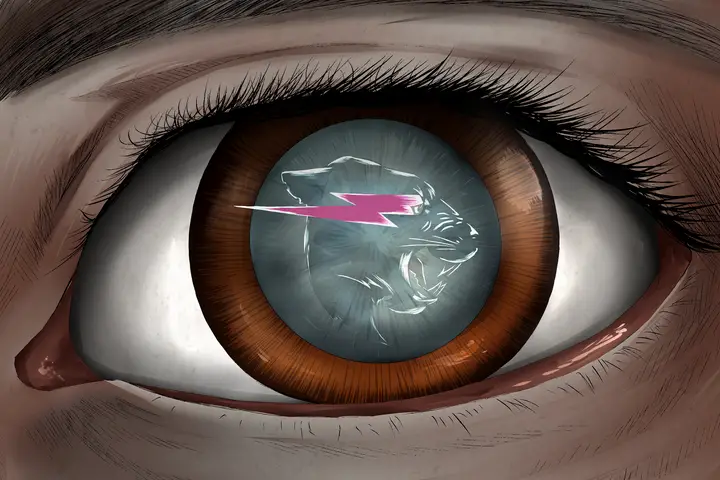In January 2023, YouTube’s content creator with the most subscribers, MrBeast, released a video titled “1,000 Blind People See for the First Time.” In the video, MrBeast (whose real name is Jimmy Donaldson) paid for 1,000 people to receive a vision-restoring surgery. While Donaldson is no newcomer to creating viral high-stakes spectacles, this video received flak from online commenters who perceived the premise as “predatory” and “exploitative.”
MrBeast joined YouTube in 2012, but his channel took off around 2017 with the release of outlandish, experimental videos like “I Mailed Myself in a Box” and “I Counted to 100,000” (the latter is almost 24 hours long). As his subscriber count grew, MrBeast attracted wealthy sponsors like Honey and TikTok, which provided him with greater funding to construct his elaborate stunts.
These early gimmicky videos soon paved the way for a new age of content showcasing his grandiose philanthropic actions. “I Gave $20,000 to Random Homeless People” and “Ordering Water then Tipping $30,000” received tens of millions of views each, cementing MrBeast’s legacy as a wholesome, charitable content creator.
However, there also exists a contrarian stance, as some online users question MrBeast’s motives. His philanthropy is always filmed and uploaded to YouTube, leading many to suspect that he only acts charitably in order to create monetizable content. This argument resurfaced in the wake of his recent “1,000 People See for the First Time” video.
Curing Blindness
MrBeast teamed up with optometrist Jeff Levenson to provide the necessary funding to secure eye surgery for a number of blind or nearly blind individuals. In the video, which accumulated 116 million views in four weeks, Levenson states that approximately half of all the blindness in the world could be cured with a simple 10-minute surgery.
According to the World Health Organization, approximately 2.2 billion people experience some form of visual impairment, and around one billion of these cases can be improved or entirely prevented with proper treatment. MrBeast’s video cites the number at 200 million; it’s likely that his statistic is referring exclusively to people diagnosed with blindness.
MrBeast’s upload consisted of an eight-minute montage showcasing post-surgery reactions from various people. In typical MrBeast fashion, he also gave large sums of money to the patients and donated $100,000 to SEE International, a nonprofit organization that “seeks to provide eyecare services to anyone in need of them, regardless of their background or ability to pay.”
Was This Ethical?
While the video garnered an overwhelmingly positive reaction, there still exists a vocal minority who perceive charitable content of this nature as “exploitative.” Why, some may ask, does this content need to be uploaded to YouTube? Why can’t he just act out of the kindness of his heart?
It’s an understandable viewpoint but one that fails to account for the economics of the situation. MrBeast’s content is extremely costly to produce; one estimate projects that the cost of 1,000 cataract surgeries is between $5-10 million. The MrBeast channel accumulates income in two primary ways: sponsorship deals and YouTube views (his daily revenue from YouTube is estimated at $100,000). Both of these avenues of income necessitate a constant stream of content.
Simply put, MrBeast releases charitable content to make money, but the money he earns is used to fund more charitable content. The cycle is only possible due to his YouTube revenue, and it improves the lives of many.
Is It Exploitative?
It’s worth examining the definition of “exploitative.” An exploitative behavior is one that “makes use of a situation or treats others unfairly in order to gain an advantage or benefit.” Does MrBeast’s video fall under this definition?
Sure, MrBeast benefited monetarily by filming his patient’s reactions, but he also used his wealth to make a life-altering contribution to their lives. Many of those interviewed in the video lamented that they could not work or drive due to their visual impairment. The surgery MrBeast paid for — which was financially unobtainable to them — allowed these 1,000 people to finally experience the joys most of us take for granted.
Sounds like a pretty fair exchange, right?
Considering the recent online push for billionaires to utilize their wealth to address global issues, it seems counterproductive to complain about a millionaire YouTuber doing just that.
The Broader Issue
MrBeast’s video educated over 100 million people about the realities of preventable blindness. Many people with some degree of blindness are unable to repair their vision due to financial difficulties. Considering that visual impairment often makes it impossible to join the workforce, these individuals are unable to scrape together the necessary funds.
MrBeast voiced his frustration with the status quo in an impassioned tweet that received over half a million likes. “Why don’t governments step in and help?” Donaldson asks, “it’s hard to see how they don’t ROI on taxes from people being able to work again.”
The WHO estimates a global productivity loss of $411 billion due to visual impairment; the cost of addressing all visual impairment is estimated at only $25 billion.
While Americans may struggle to afford eye surgery due to unparalleled healthcare costs, there are many nations that have virtually no access to this level of treatment. MrBeast and SEE International extended their resources to a number of developing countries, ensuring that most of the 1000 patients in the video came from outside the US.
While it’s true that MrBeast benefits monetarily from the content he creates, this revenue allows him to make meaningful contributions to the lives of others. His “1,000 People See for the First Time” video informed millions of viewers about the realities of preventable blindness, and this mass exposure will hopefully lead to increased donations for organizations like SEE International. With any luck, this is only the first step toward permanently ending preventable blindness.
And that’s something to look forward to.

















